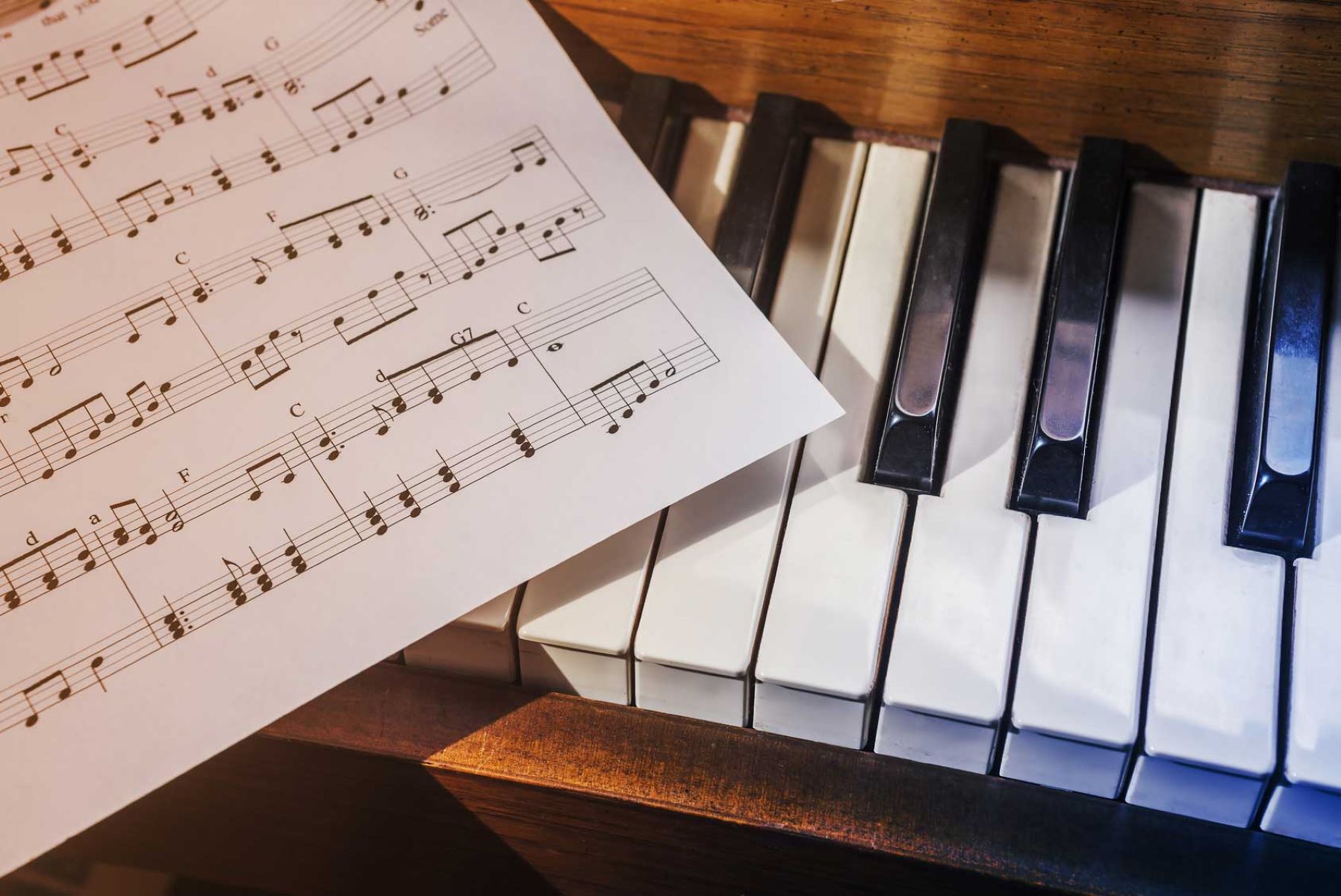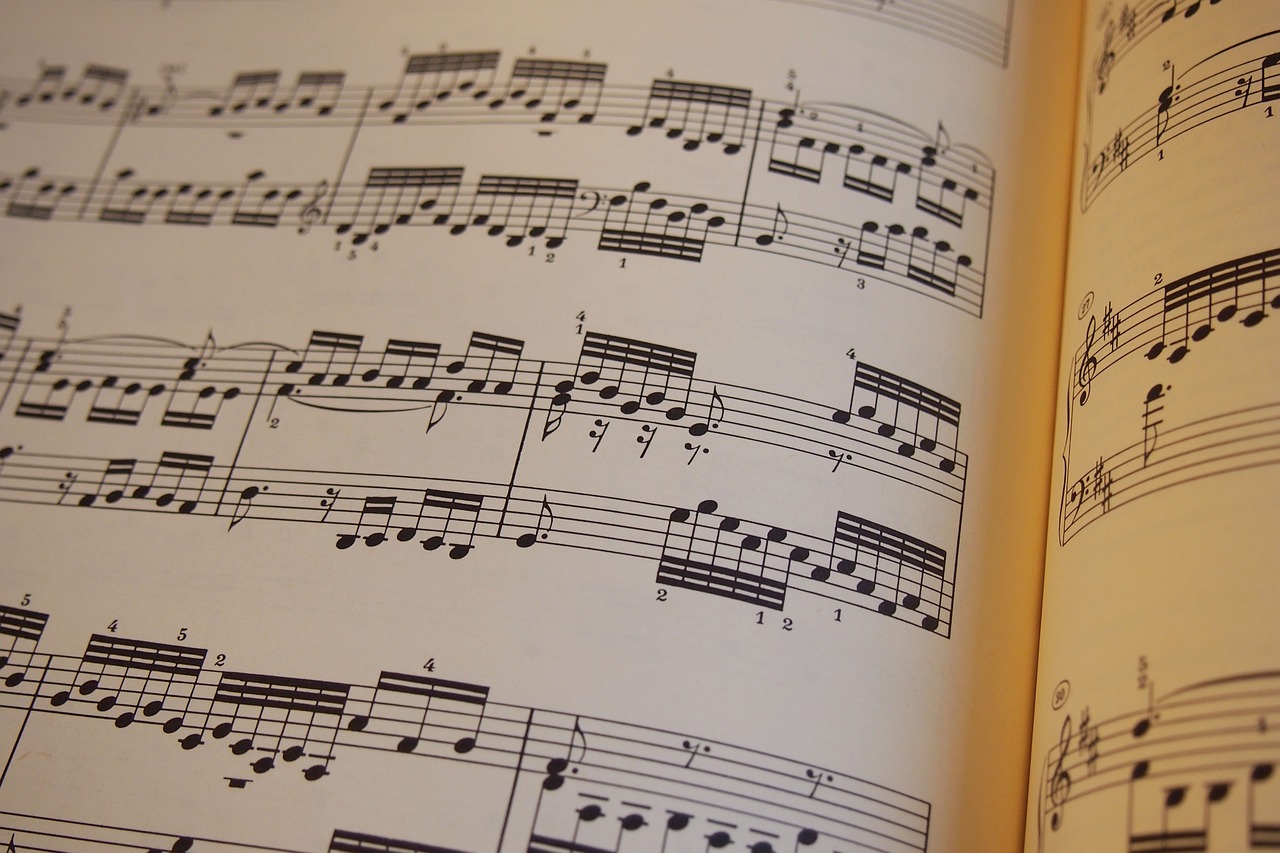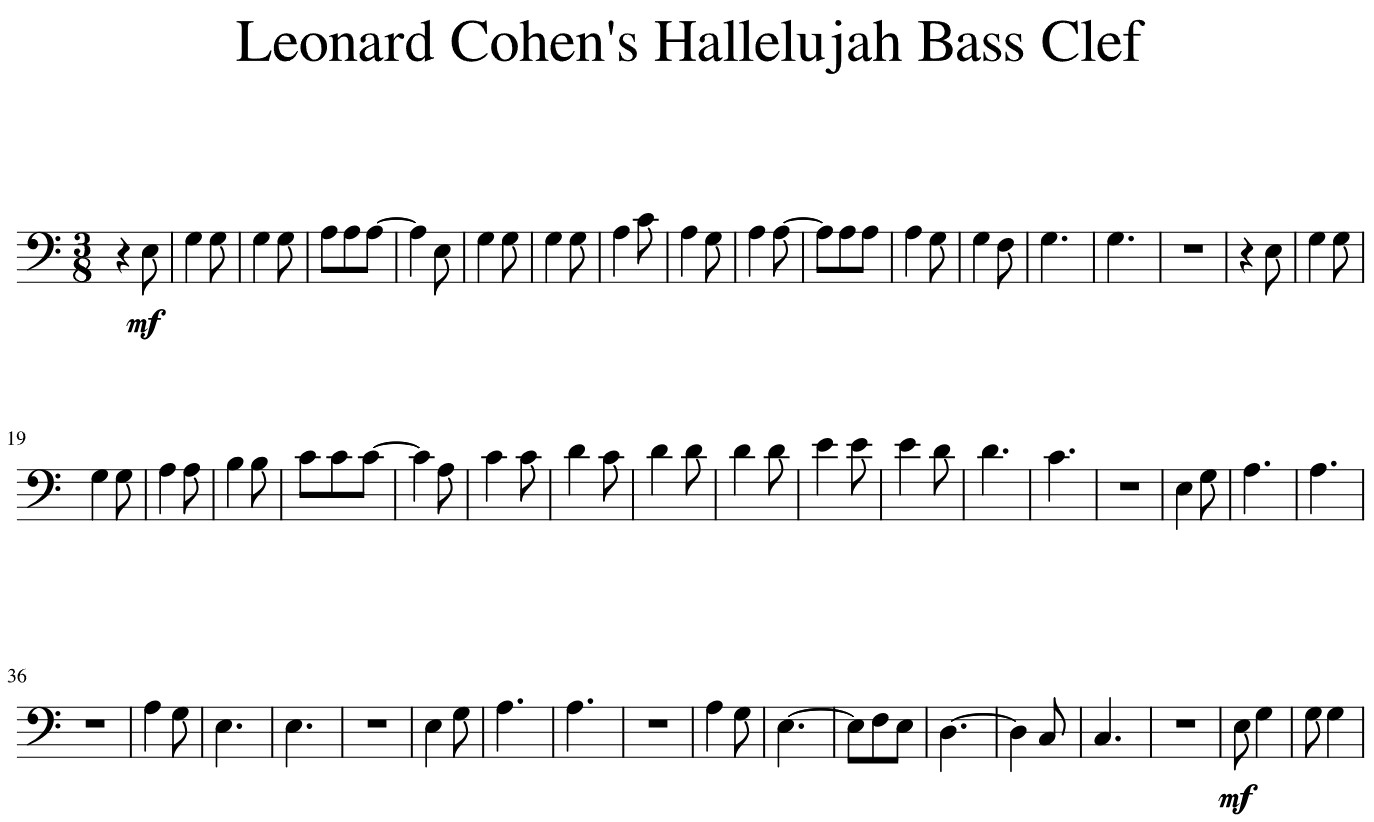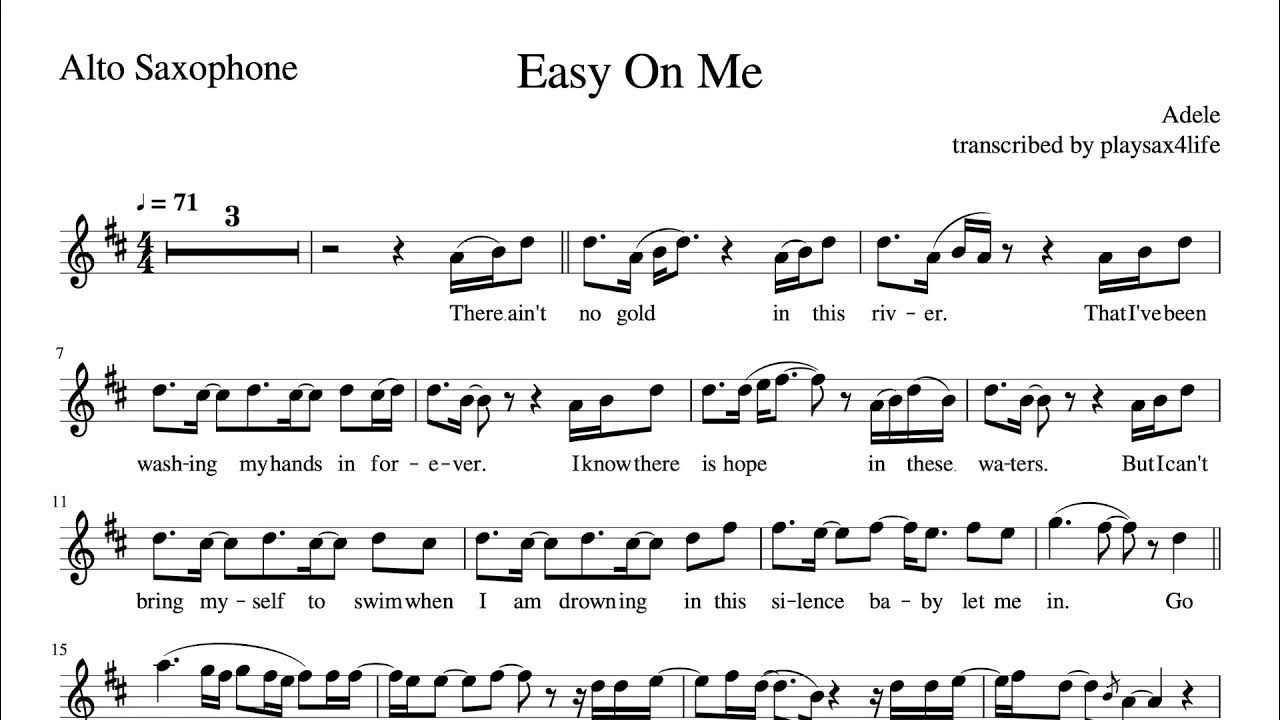Home>Production & Technology>Music Theory>Music Theory How To Read Flat Key Signatures
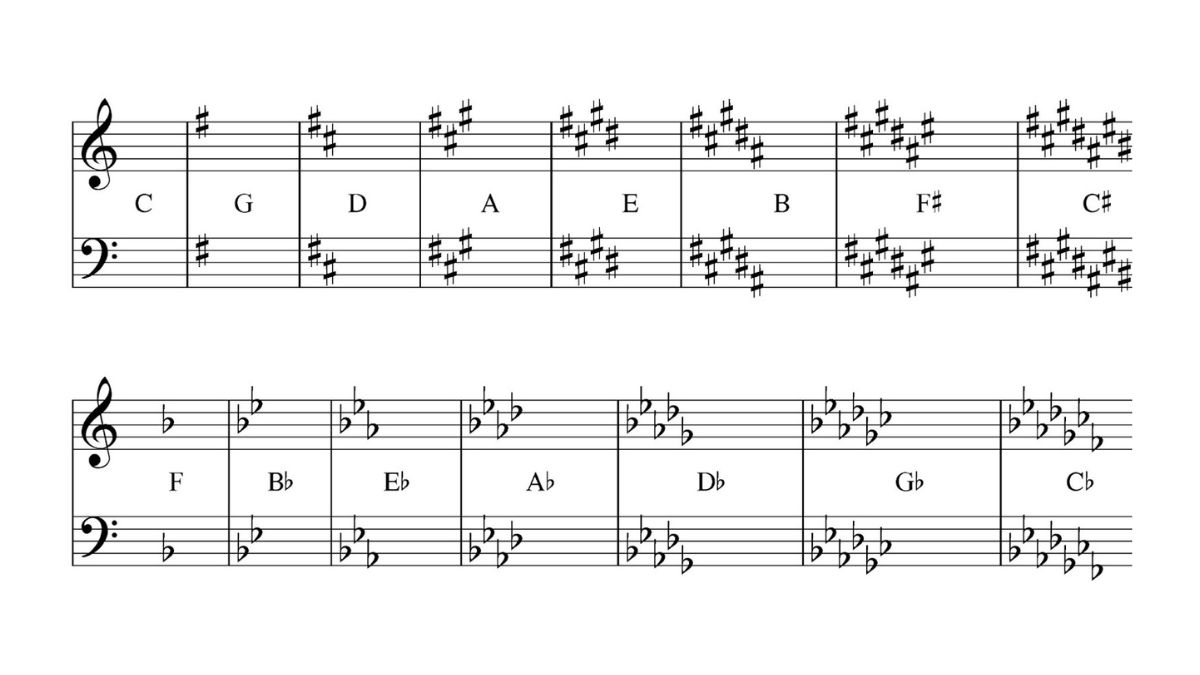

Music Theory
Music Theory How To Read Flat Key Signatures
Published: January 30, 2024
Learn how to read flat key signatures in music theory and deepen your understanding of musical notation.
(Many of the links in this article redirect to a specific reviewed product. Your purchase of these products through affiliate links helps to generate commission for AudioLover.com, at no extra cost. Learn more)
Table of Contents
Introduction
Music theory is the foundation that underpins our understanding and appreciation of music. It provides a framework for analyzing and interpreting musical elements such as melody, harmony, and rhythm. One essential aspect of music theory is key signatures, which provide valuable information about the tonal framework of a piece of music.
Key signatures are a system of musical notation that indicate the key in which a piece is written. They consist of a series of sharps (#) or flats (b) placed at the beginning of a musical staff, just after the clef. In this article, we’ll delve into the world of flat key signatures, which are marked with flats, and explore how to read and understand them.
Flat key signatures add a unique flavor to music, bringing a subtle richness and depth. They are commonly used in various genres, including classical, jazz, blues, and more. By mastering the ability to read and interpret flat key signatures, musicians can unlock a treasure trove of musical possibilities.
In this comprehensive guide, we will break down the system of flat key signatures, explore the circle of fifths, and provide helpful tips and tricks for effectively reading and understanding sheet music with flat key signatures. Whether you are a beginner musician or a seasoned professional, this article will empower you with the knowledge and skills needed to navigate the world of flat key signatures with confidence.
What are Key Signatures?
In music theory, a key signature is a set of sharps or flats that appear at the beginning of a musical staff, just after the clef. They are used to indicate the key in which a piece of music is written. Key signatures are an essential part of reading and interpreting sheet music.
Key signatures serve two primary functions:
- They tell us what notes are automatically altered throughout the piece.
- They provide information about the tonal center or key of the music.
Key signatures are represented by symbols, either sharps (#) or flats (b), and are placed on the lines or spaces of the staff. Sharps raise the pitch of a note by a half step, while flats lower the pitch by a half step. The number of sharps or flats in a key signature can vary, depending on the key.
For example, if a piece has a key signature with one sharp, it means that every occurrence of the note on that particular line or space is automatically raised by a half step. Similarly, if a piece has a key signature with two flats, every occurrence of the note on the lines or spaces marked with flats is automatically lowered by a half step.
The key signature acts as a guide throughout the piece, eliminating the need for individual accidentals (sharps or flats) to be written in front of each note. This simplifies the notation and makes it easier for musicians to read and play the music accurately.
Understanding key signatures is crucial for musicians as it allows them to recognize patterns and tonal relationships within a piece of music. It enables them to anticipate and interpret the melodic and harmonic elements efficiently.
Now that we have a general understanding of key signatures, let’s explore the specific system of flat key signatures in more detail.
The System of Flat Key Signatures
The system of flat key signatures follows a specific pattern that allows musicians to quickly identify and interpret the flats within a piece of music. It is based on the circle of fifths, which is a circular arrangement of the twelve pitches or notes in Western music.
The circle of fifths is a powerful tool for understanding the relationship between keys and their corresponding key signatures. It shows the progression of keys, moving clockwise, with each key a fifth higher than the previous one. In the circle of fifths, the order of sharps and flats is conveniently arranged.
For flat key signatures, the order of flats in the key signature follows the circle of fifths in reverse. The key with the most flats starts at the top of the circle (Bb), and each subsequent key adds another flat in a clockwise direction.
The order of flats in a key signature is as follows:
- Bb (B flat)
- Eb (E flat)
- Ab (A flat)
- Db (D flat)
- Gb (G flat)
- Cb (C flat)
- Fb (F flat)
By memorizing the order of flats in this sequence, musicians can quickly identify how many flats are in a specific key signature and understand which notes are automatically played as flats throughout the piece.
It’s important to note that the key signature indicates the presence of flats but does not specify which notes are flat. Depending on the musical context, a flat symbol may be placed next to specific notes to indicate temporary alterations.
Understanding the system of flat key signatures is essential for reading and interpreting sheet music accurately. By familiarizing yourself with the order of flats and the circle of fifths, you’ll be equipped to navigate through pieces written in flat keys with confidence and ease.
Understanding the Circle of Fifths
The circle of fifths is a powerful tool in music theory that visually represents the relationship between the twelve pitches or notes in Western music. It is a circular arrangement that follows the pattern of ascending fifths, allowing musicians to understand key relationships, key signatures, and chord progressions.
Starting with the note C at the top of the circle, moving clockwise, each key in the circle is a fifth higher than the previous one. This means that each new key adds one sharp or removes one flat from the key signature. The circle of fifths encompasses both the major and minor keys.
In the circle of fifths, adjacent keys are related by a common note. For example, the key of G has one sharp (F#), and the key of D, located a fifth higher, has two sharps (F# and C#). This relationship continues, with each key adding one sharp or removing one flat.
The circle of fifths helps musicians understand the tonal relationships between keys. Moving clockwise in the circle represents moving in a higher pitch direction, while moving counterclockwise represents moving in a lower pitch direction. Adjacent keys in the circle share a close relationship and are often used in chord progressions and modulation.
The circle of fifths is also helpful in understanding chord progressions. The chords built off each key in the circle follow a predictable pattern of major and minor chords, known as the diatonic chords. This pattern is essential for composing and analyzing music and can be used as a guide when creating chord progressions within a given key.
Overall, the circle of fifths is a valuable tool that helps musicians visualize the relationships between keys, understand key signatures, and navigate chord progressions. By familiarizing yourself with this concept, you’ll develop a deeper understanding of music theory and enhance your skills as a musician.
Memorizing the Order of Flats
Memorizing the order of flats in the key signature is an essential skill for musicians when reading and interpreting sheet music written in flat keys. Fortunately, there are helpful techniques and mnemonics that can aid in remembering the specific order of flats.
One commonly used mnemonic to memorize the order of flats is “Battle Ends And Down Goes Charles’ Father.” Each word in this mnemonic represents the corresponding flat in the key signature, in sequential order: Bb (Battle), Eb (Ends), Ab (And), Db (Down), Gb (Goes), and Cb (Charles’ Father).
Another mnemonic that can be used is “BEAD Greatest Common Factor.” This acronym not only helps with remembering the order of flats (Bb, Eb, Ab, Db, Gb, Cb) but also serves as a helpful reminder of the notes that are automatically flat in each key.
Repetition and practice are key to memorizing the order of flats. Take the time to write out the sequence of flats repeatedly, both in written form and by playing the corresponding scales on your instrument. Understanding the circle of fifths and how it relates to the order of flats can also aid in memorization.
Visual aids, such as flashcards or charts, can also be useful tools in memorizing the order of flats. Create flashcards with the names and corresponding flats, and regularly quiz yourself on their sequence. Additionally, reference charts that display the order of flats can be placed in a visible location for quick reference until memorization becomes second nature.
Once you have committed the order of flats to memory, you’ll be able to quickly identify the flats present in a key signature and understand which notes are played as flats throughout a piece of music. This knowledge will significantly improve your ability to read and interpret sheet music written in flat keys.
By using mnemonic devices, practicing regularly, and understanding the relationship between the order of flats and the circle of fifths, memorizing the order of flats will become an effortless and invaluable skill in your journey as a musician.
The Major Flat Key Signatures
Major key signatures with flats are an essential part of music theory. They provide musicians with valuable information about the tonality and harmonic structure of a piece of music. Understanding the major flat key signatures allows musicians to identify the key and read sheet music accurately.
The major flat key signatures follow a consistent pattern based on the circle of fifths. Each key signature represents a specific major key and indicates the presence of flats in the key signature. Let’s take a look at the major flat key signatures:
- Key of F (1 flat): The key of F major has a single flat in its key signature, which is Bb. This means that every B note in the piece will be automatically played as Bb.
- Key of Bb (2 flats): The key of Bb major has two flats: Bb and Eb. In addition to the Bb mentioned earlier, the Eb indicates that every E note in the piece will be played as Eb.
- Key of Eb (3 flats): The key of Eb major has three flats: Bb, Eb, and Ab. Along with the previously mentioned Bb and Eb, the Ab indicates that all A notes in the piece will be played as Ab.
- Key of Ab (4 flats): The key of Ab major contains four flats: Bb, Eb, Ab, and Db. This means that in addition to the previously mentioned flats, all D notes will be played as Db.
- Key of Db (5 flats): The key of Db major has five flats: Bb, Eb, Ab, Db, and Gb. This indicates that every G note in the piece will be played as Gb.
- Key of Gb (6 flats): The key of Gb major features six flats: Bb, Eb, Ab, Db, Gb, and Cb. In this key, every C note is played as Cb.
- Key of Cb (7 flats): The key of Cb major has the most flats, including Bb, Eb, Ab, Db, Gb, Cb, and Fb. This means that all F notes in the piece will be played as Fb.
By familiarizing yourself with the major flat key signatures and their corresponding flats, you can quickly determine the key of a piece and understand which notes are altered to flats throughout the music. This knowledge is crucial for accurately performing and interpreting sheet music written in major flat keys.
Remember that the key signature only indicates the presence of flats; it doesn’t specify individual notes that are flat within a piece. Additional accidentals may be used to indicate temporary alterations as well.
Now that we’ve covered the major flat key signatures, let’s move on to exploring the minor flat key signatures.
The Minor Flat Key Signatures
Just as there are major flat key signatures, there are also minor flat key signatures. The minor key signatures with flats follow a similar pattern to their major counterparts and provide musicians with valuable information about the tonality and harmonic structure of a piece of music.
Let’s take a closer look at the minor flat key signatures:
- Key of D minor (1 flat): The key of D minor has a single flat in its key signature, which is Bb. This means that every B note in the piece will be automatically played as Bb.
- Key of G minor (2 flats): The key of G minor contains two flats: Bb and Eb. In addition to the Bb mentioned earlier, the Eb indicates that every E note in the piece will be played as Eb.
- Key of C minor (3 flats): The key of C minor has three flats: Bb, Eb, and Ab. Along with the previously mentioned Bb and Eb, the Ab indicates that every A note in the piece will be played as Ab.
- Key of F minor (4 flats): The key of F minor features four flats: Bb, Eb, Ab, and Db. This means that in addition to the previously mentioned flats, all D notes will be played as Db.
- Key of Bb minor (5 flats): The key of Bb minor includes five flats: Bb, Eb, Ab, Db, and Gb. This indicates that every G note in the piece will be played as Gb.
- Key of Eb minor (6 flats): The key of Eb minor has six flats: Bb, Eb, Ab, Db, Gb, and Cb. In this key, every C note is played as Cb.
- Key of Ab minor (7 flats): The key of Ab minor has the most flats among the minor keys, including Bb, Eb, Ab, Db, Gb, Cb, and Fb. This means that all F notes in the piece will be played as Fb.
Understanding the minor flat key signatures is crucial for musicians when reading and interpreting sheet music written in minor keys. By familiarizing yourself with these key signatures, you can quickly identify the tonality and the altered notes in a piece, allowing for accurate performance and interpretation.
Just like the major flat key signatures, the minor flat key signatures indicate the presence of flats, but individual notes that are flat within a piece may also be indicated with additional accidentals.
Now that we’ve covered both the major flat and minor flat key signatures, and their corresponding flats, you have a solid foundation for reading and understanding sheet music written in flat keys. Let’s move on to exploring how to effectively read sheet music with flat key signatures.
Reading Sheet Music with Flat Key Signatures
Reading sheet music with flat key signatures requires a solid understanding of key signatures, note names, and the impact of flats on specific notes. By following a few essential steps, musicians can effectively navigate sheet music with flat key signatures:
- Identify the key signature: Look at the key signature at the beginning of the staff and determine the number of flats present. Each flat indicates a particular note that will be played as a flat throughout the piece.
- Memorize the order of flats: As discussed earlier, memorizing the order of flats will help you quickly identify which notes are automatically played as flats. Utilize mnemonic devices or visual aids to reinforce this knowledge.
- Know the note names: Familiarize yourself with the note names on the staff, including their corresponding flat names. This will enable you to recognize when a note with a flat should be played instead of the natural or sharp note.
- Consider key changes: Be attentive to any key changes that may occur within the piece. A key change may indicate a shift to a different flat key signature, requiring you to adjust the notes accordingly.
- Watch for accidentals: Although the key signature provides a general guideline, be on the lookout for accidentals, which are temporary alterations to a note’s pitch. Accidentals may introduce additional flats or sharps not present in the key signature, so be sure to read and interpret them accurately as you encounter them.
- Practice playing the scales: To further solidify your understanding of flat key signatures, practice playing the scales of each flat key. This will help you become familiar with the fingerings and the specific notes that need to be played as flats.
Remember, reading sheet music with flat key signatures is a skill that improves with practice. As you encounter more pieces, you will become more comfortable and efficient in recognizing the key signature and interpreting the music correctly.
By following these steps and consistently practicing, you’ll develop a strong ability to read sheet music with flat key signatures, allowing you to perform the music accurately and confidently.
Tips and Tricks for Reading Flat Key Signatures
Reading sheet music with flat key signatures can be made easier with a few helpful tips and tricks. These strategies will enhance your ability to quickly identify key signatures, interpret notes accurately, and navigate through music written in flat keys:
- Memorize the order of flats: Mastering the order of flats in the key signature is crucial. Use mnemonic devices, such as acronyms or memorable phrases, to help you remember the sequence of flats.
- Look for patterns: Notice patterns in the key signatures with flats. You’ll observe that some flats repeat in multiple keys, which can aid in quickly identifying the key signature and the corresponding notes.
- Practice scales and arpeggios: Regularly practice scales and arpeggios in flat keys. This will familiarize you with the fingerings and the specific notes that are played as flats in each key.
- Use guides and references: Keep a handy reference guide or chart of the order of flats and their corresponding keys. This visual aid can serve as a quick reminder when encountering unfamiliar key signatures.
- Transcribe music to neutral keys: If you’re having difficulty reading sheet music with many flats, try transcribing the music to a neutral key, such as C major or A minor. This can simplify the notation and make it easier to recognize and interpret the notes.
- Practice sight-reading in flat keys: Regularly sight-read music written in flat keys to improve your overall fluency and familiarity with these key signatures. Gradually increase the difficulty level to further challenge your reading skills.
- Listen to music in flat keys: Train your ear by listening to music composed in flat keys. This will help you develop an intuitive sense of the tonality and characteristics of each key, making it easier to recognize and interpret them in sheet music.
With consistent practice, these tips and tricks will increase your confidence and proficiency in reading sheet music with flat key signatures. Remember to approach each piece with patience and focus, and over time, you’ll become adept at navigating the intricacies of music written in flat keys.
Conclusion
Understanding and being able to read flat key signatures is an essential skill for any musician. It opens up a world of musical possibilities and enhances your ability to interpret and perform music accurately. By memorizing the order of flats, practicing scales, and employing helpful tips and tricks, you can confidently navigate sheet music written in flat keys.
Remember, key signatures provide critical information about the tonality of a piece and the notes that are automatically altered to flats. By familiarizing yourself with the major and minor flat key signatures, you can quickly identify the key of a piece and interpret the music with precision.
Utilize mnemonic devices, visual aids, and regular practice to internalize the order of flats and further enhance your reading skills. Take advantage of the circle of fifths to understand the relationship between keys and deepen your musical knowledge.
Reading sheet music with flat key signatures requires patience, practice, and an attentive ear. As you immerse yourself in music written in flat keys, you’ll become more proficient at recognizing and interpreting the key signatures, notes, and accidentals.
So, embrace the beauty and richness of music in flat keys. With dedication and perseverance, you’ll master the art of reading sheet music with flat key signatures, enriching your musical journey and opening up new horizons as a musician.

